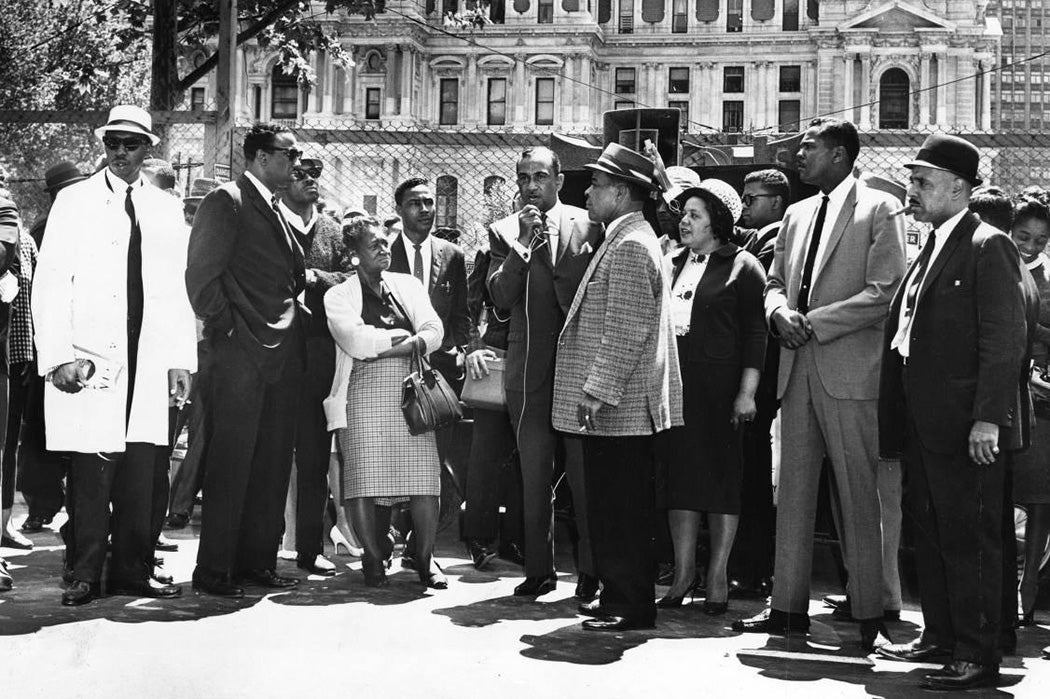Histories of the US Civil Rights era concentrate on the South, where customary and legal racial segregation was most manifest, and most murderous. What happened in the North? Plenty, writes historian Thomas J. Sugrue, who subtitles his book on the subject the “forgotten struggle for civil rights in the North.”
In exploring how affirmative action became a hallmark of the northern civil rights movement, Sugrue begins in April 1963, when police dogs and water hoses were turned on Black school children marching for civil rights in Birmingham, Alabama. At the same time, there was a campaign in Philadelphia, Pennsylvania, to desegregate the building trades unions. This campaign received less attention than events in Birmingham, but was equally significant.
Philly’s trade unions—ironworkers, plumbers and pipefitters, steamfitters, sheet metal workers, electrical workers, roofers, and elevator construction workers—were doing very well by government-funded construction projects. Prevailing wage laws guaranteed high wages and benefits. In fact, nationally, “few sectors of the economy benefited more from state support” than construction at this time.
Sugrue calls the period “one of the best moments in American history to be a construction worker.” So, for those on the outside, the all-white membership of numerous trade unions didn’t seemed fair. New York City, Trenton, Cleveland, and St. Louis, among other cities, would see similar protests to desegregate such unions, and for the next several years, the “building trades would be a major target of northern civil rights protestors.”
In June of 1963, an executive order by President John F. Kennedy prohibited discrimination, and called for “affirmative action,” in government-contracted construction employment. This was the first time this term was used, but it was only vaguely defined. It would not be until 1969, with President Richard M. Nixon’s Philadelphia Plan, that those bidding on government contracts would have to submit “affirmative action plans” detailing goals and targets for “minority manpower utilization.”
The most controversial element of the plan, finalized in September 1969, established numerical targets, defined as a percentage range of minority workers to be employed from a particular trade on each contract. Employers were required to provide statistical evidence of their compliance. Noncompliance could lead to the loss of federal contracts or litigation and legal penalties under federal civil rights law.
Affirmative action is usually thought of solely as a top-down bureaucratic creation, part of a regulatory state that would use such language as “minority manpower utilization.” Sugrue argues that this remedy to institutional racism was government’s response to pressure from below. The grassroots demanded change, and affirmative action is what “emerged amid a great and unresolved contest over race, employment, and civil rights that played out in the streets, union halls, and workplaces of the urban North.”
Sugrue details how the gradualism of civil rights organizations in the 1950s in Northern cities like Philadelphia failed to end employment discrimination or desegregate unions. For instance, a 1953 effort to open department store jobs to Blacks cautiously “avoided all publicity” and consequently got nowhere. Brasher, more militant strategies like boycotts and picketing came with the 1960s. In fact, protests in Philadelphia in 1963 turned violent as “police officers, unionists, and demonstrators clashed.”
Weekly Newsletter
Get your fix of JSTOR Daily’s best stories in your inbox each Thursday.
Privacy Policy Contact Us
You may unsubscribe at any time by clicking on the provided link on any marketing message.
As in the South, violence is what got federal attention. That attention ultimately codified affirmative action. It was perhaps ironic that this happened under a Republican administration that also honed the “law and order” racial dog-whistle, encouraged construction workers to attack peace protesters, and then launched the “Southern Strategy” to move Southern white voters from the Democratic to Republican column.
In the more than half a century since the civil rights era, affirmative action has become that period’s “most fiercely contested legacy.” Affirmative action’s original point, to desegregate employment opportunities in the face of entrenched white supremacy, has been lost in the noise.
Reading List
Affirmative Action: Foundations and Key Concepts
Support JSTOR Daily! Join our new membership program on Patreon today.








